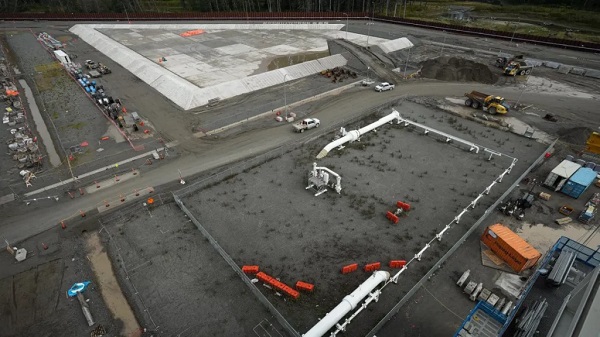Alberta
Province advancing plans to build stand-alone Stollery Children’s Hospital

Investing in a new Stollery Children’s Hospital |
If passed, Budget 2024 will allocate $20 million over three years to advance plans for a stand-alone Stollery Children’s Hospital in Edmonton.
With 236 beds, the Stollery Children’s Hospital is the second-largest children’s hospital in Canada and has among the highest inpatient volumes of any children’s hospital in Canada. As the province’s population continues to grow, it is crucial that children in Edmonton and northern Alberta have access to the specialized care they need.
Alberta’s government is steadfast in its commitment to build a stand-alone Stollery Children’s Hospital. A new facility would provide more beds, larger clinical spaces, more private rooms and dedicated areas for children and their families. It would also result in additional teaching spaces and state-of-the-art technologies to enhance health care delivery specifically for children.
“A new, stand-alone children’s hospital will build capacity and enable health care providers to continue delivering world-class care to children. This investment, as well as other capital investments outlined in Budget 2024, is an example of how we are creating a more unified and efficient health care system for Albertans. I look forward to sharing more details soon.”
“The new Stollery Children’s Hospital project is the latest addition to Edmonton’s health care infrastructure. Building upon the successes of recent projects like the new emergency department at the Misericordia Community Hospital and Norwood West at the Gene Zwozdesky Centre, the new Stollery will help increase health care capacity in the capital region.”
Alberta’s government initially invested in the project in 2021, providing $1 million that was matched by the Stollery Children’s Hospital Foundation. The proposed investment in Budget 2024 will include $17 million in new funding, following the $3 million invested through last year’s budget, for a total investment of $21 million in government funding over four years.
The investment in a new stand-alone Stollery Children’s Hospital is not only important for families in the city of Edmonton and capital region, it is important for families living across northern Alberta. The Stollery Children’s Hospital serves families in a geographical area of more than 500,000 square kilometres, stretching from Red Deer to Alberta’s northernmost border with the Northwest Territories. Almost 40 per cent of inpatients at the Stollery come from outside the Edmonton area and the hospital is the closest and primary children’s hospital for residents of the Northwest Territories.
“The Stollery has an incredible reputation for the impact it makes in the community, and especially in northern Alberta. This stand-alone Stollery Children’s Hospital is a long-awaited, necessary project that will help provide additional health care services to children and their families when they need it the most.”
“This remarkable investment will take us one step closer to our goal of building a reimagined Stollery Children’s Hospital for the future. A new Stollery is poised to provide the most innovative, modern and family-centred physical and mental health care to help bring hope and comfort to kids dealing with serious illness and injury. Thank you to the Government of Alberta for recognizing the very real need for this hospital.”
“A new Stollery Children’s Hospital is urgently needed to provide dedicated care for our children. By separating kids from adults, a stand-alone Stollery ensures a nurturing environment and the most modern pediatric equipment and resources to offer families like ours a health care space designed exclusively for our children.”
Plans for the new hospital include integrating mental health resources, virtual care, research and training facilities to better support patients and improve health outcomes. There will also be a focus on ensuring health care providers, parents and caregivers have the resources they need to support patients.
Alberta’s government remains dedicated to expanding and modernizing hospitals and facilities to provide Albertans with high-quality health care while increasing system capacity and supporting front-line health care workers.
“Alberta’s government is committed to building a stand-alone Stollery Children’s Hospital when planning is complete. A new facility would provide more beds, larger clinical spaces, more private rooms and dedicated areas for children and their families. There would also be more teaching spaces and state-of-the-art technologies to enhance health care delivery.”
Quick facts
- Established in 2001, the Stollery Children’s Hospital is a full-service pediatric hospital and centre for complex pediatric care and research.
- The Stollery Children’s Hospital sees about 300,000 children, 55,000 emergency room visits and 12,000 surgeries annually.
Related news
Alberta
Alberta Precipitation Update

Below are my updated charts through April 2025 along with the cumulative data starting in October 2024. As you can see, central and southern Alberta are trending quite dry, while the north appears to be faring much better. However, even there, the devil is in the details. For instance, in Grande Prairie the overall precipitation level appears to be “normal”, yet in April it was bone dry and talking with someone who was recently there, they described it as a dust bowl. In short, some rainfall would be helpful. These next 3 months are fairly critical.
Thanks for reading William’s Substack!
Subscribe for free to receive new posts and support my work.
Alberta
Alberta’s move to ‘activity-based funding’ will improve health care despite naysayer claims

From the Fraser Institute
After the Smith government recently announced its shift to a new approach for funding hospitals, known as “activity-based funding” (ABF), defenders of the status quo in Alberta were quick to argue ABF will not improve health care in the province. Their claims are simply incorrect. In reality, based on the experiences of other better-performing universal health-care systems, ABF will help reduce wait times for Alberta patients and provide better value-for-money for taxpayers.
First, it’s important to understand Alberta is not breaking new ground with this approach. Other developed countries shifted to the ABF model starting in the early 1990s.
Indeed, after years of paying their hospitals a lump-sum annual budget for surgical care (like Alberta currently), other countries with universal health care recognized this form of payment encouraged hospitals to deliver fewer services by turning each patient into a cost to be minimized. The shift to ABF, which compensates hospitals for the actual services they provide, flips the script—hospitals in these countries now see patients as a source of revenue.
In fact, in many universal health-care countries, these reforms began so long ago that some are now on their second or even third generation of ABF, incorporating further innovations to encourage an even greater focus on quality.
For example, in Sweden in the early 1990s, counties that embraced ABF enjoyed a potential cost savings of 13 per cent over non-reforming counties that stuck with budgets. In Stockholm, one study measured an 11 per cent increase in hospital activity overall alongside a 1 per cent decrease in costs following the introduction of ABF. Moreover, according to the study, ABF did not reduce access for older patients or patients with more complex conditions. In England, the shift to ABF in the early to mid-2000s helped increase hospital activity and reduce the cost of care per patient, also without negatively affecting quality of care.
Multi-national studies on the shift to ABF have repeatedly shown increases in the volume of care provided, reduced costs per admission, and (perhaps most importantly for Albertans) shorter wait times. Studies have also shown ABF may lead to improved quality and access to advanced medical technology for patients.
Clearly, the naysayers who claim that ABF is some sort of new or untested reform, or that Albertans are heading down an unknown path with unmanageable and unexpected risks, are at the very least uninformed.
And what of those theoretical drawbacks?
Some critics claim that ABF may encourage faster discharges of patients to reduce costs. But they fail to note this theoretical drawback also exists under the current system where discharging higher-cost patients earlier can reduce the drain on hospital budgets. And crucially, other countries have implemented policies to prevent these types of theoretical drawbacks under ABF, which can inform Alberta’s approach from the start.
Critics also argue that competition between private clinics, or even between clinics and hospitals, is somehow a bad thing. But all of the developed world’s top performing universal health-care systems, with the best outcomes and shortest wait times, include a blend of both public and private care. No one has done it with the naysayers’ fixation on government provision.
And finally, some critics claim that, under ABF, private clinics will simply focus on less-complex procedures for less-complex patients to achieve greater profit, leaving public hospitals to perform more complex and thus costly surgeries. But in fact, private clinics alleviate pressure on the public system, allowing hospitals to dedicate their sophisticated resources to complex cases. To be sure, the government must ensure that complex procedures—no matter where they are performed—must always receive appropriate levels of funding and similarly that less-complex procedures are also appropriately funded. But again, the vast and lengthy experience with ABF in other universal health-care countries can help inform Alberta’s approach, which could then serve as an example for other provinces.
Alberta’s health-care system simply does not deliver for patients, with its painfully long wait times and poor access to physicians and services—despite its massive price tag. With its planned shift to activity-based funding, the province has embarked on a path to better health care, despite any false claims from the naysayers. Now it’s crucial for the Smith government to learn from the experiences of others and get this critical reform right.
-

 Economy2 days ago
Economy2 days agoCanada’s Energy Wealth Is Bleeding South
-

 Alberta2 days ago
Alberta2 days agoAlberta’s move to ‘activity-based funding’ will improve health care despite naysayer claims
-

 Business2 days ago
Business2 days agoTrump announces UK will fast-track American products under new deal
-

 espionage2 days ago
espionage2 days agoHong Kong Police Detain Relatives of Canadian Candidate Targeted by Beijing Election Interference
-

 International2 days ago
International2 days agoCardinals elect Robert Francis Prevost, first American pope to lead Catholic church
-

 COVID-191 day ago
COVID-191 day agoCanada’s top doctor signed oath to withhold COVID info that could ‘embarrass’ Trudeau’s cabinet: records
-

 Business2 days ago
Business2 days agoOttawa foresees a future of despair for Canadians. And shrugs
-

 International2 days ago
International2 days agoNew pope elected, white smoke from the Vatican








